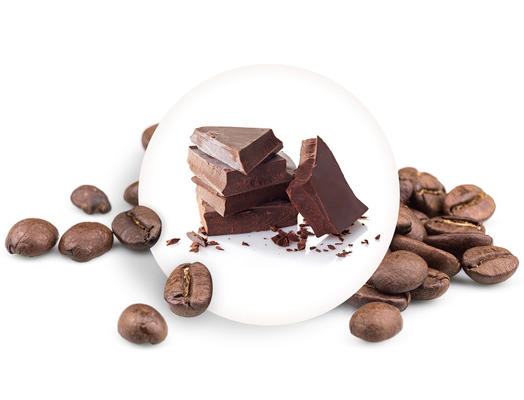cinibeans
CHOCOLATING Coffee beans
CHOCOLATING Coffee beans
Couldn't load pickup availability
The chocolate flavour is one of the first things our customers buy. And rightly so. The exquisite Arabica from Peru, kissed with sweetly sweet chocolate, appeals to men and women, young and old, at work and on outings. Make it into a cappuccino or latte. Flavoured with milk foam, it creates a fragrantly relaxed moment. Place of origin:
Peru
Species:
Typica
Countryside:
Puno Norte
Sea level f. m.:
1900m
Taste:
Chocolate
Processing:
Wet
Composition
Arabica 100%,
Aroma
The taste and foam of coffee
Because we base the chocolate on 100% Arabica coffee from Peru, we get a delicious coffee with full body, flavour and aroma. The Arabica Typica variety is distinctive for its sweet taste, making it the perfect combination with the chocolate nuances. Its foam is light, dense, elastic and very soft.
Origin of the coffee
Many interesting subspecies of Arabica coffee beans are grown. One of them - Typica - has been chosen as the base for our flavoured coffees. We chose this type of coffee because it gives a nice harmonious base and blends perfectly with the natural flavours we flavour our coffee with. Our roast master roaster does not use synthetic flavours as a matter of principle, only natural flavours and is extremely careful to apply them correctly during the roasting process. Flavoured coffee can be flavoured before or after roasting. We choose the first option because it is the only way to preserve the natural flavour and aroma of the beans, which is imparted by the rich aroma. Although it is a more complicated and expensive form of flavouring, it is worth the effort. The coffee was imported from the Puno region of Peru.
The plantations grow near Lake Titicac (the largest lake in South America by area and the highest navigable lake in the world). Smallholder farmers from the Andes have been growing coffee for generations, so the crops are highly prized and valued. Because they are grown in hard-to-reach places, coffee bushes are considered organic. Transporting fertilizers up steep slopes would be very expensive and demanding. In the Andes, harvesting is done several times in a row, continuously, as the coffee fruit ripens. The washing process begins by spraying the coffee cherries into water in special containers. These pots are used to separate the quality beans from the unripe ones.
The skins and flesh are then removed from the good quality beans using special pressing plates. This is followed by fermentation of the seeds in special fermentation vessels. After fermentation, the beans are dried in direct sunlight or in a drier. The coffee is finally sorted, packaged and sold on the exchange.
Preparing flavoured coffee in an automatic coffee machine
If you want to use flavoured coffee in an automatic coffee maker with an automatic dispenser, we recommend that you make sure that this is possible in the manual of the coffee maker. If the machine manufacturer does not provide information on flavoured coffee, please follow the recommendations below.
The natural flavouring that the coffee is flavoured with may react with the plastics in the container and bleach if it comes into contact with them for a prolonged period of time.
Always load only as much flavoured coffee into the coffee machine as you will consume immediately.
After the flavoured coffee has been prepared, the next cup should be unflavoured coffee. This will clean the machine of any residues of natural flavouring agents.
The same rule should be followed when grinding flavoured coffee (manual and electric).
Instructions for use
Grind the coffee according to its type.
Use at least 1.5-2 teaspoons (about 7 g) of ground coffee per cup.
Pour off the coffee with water at about 95 °C.

